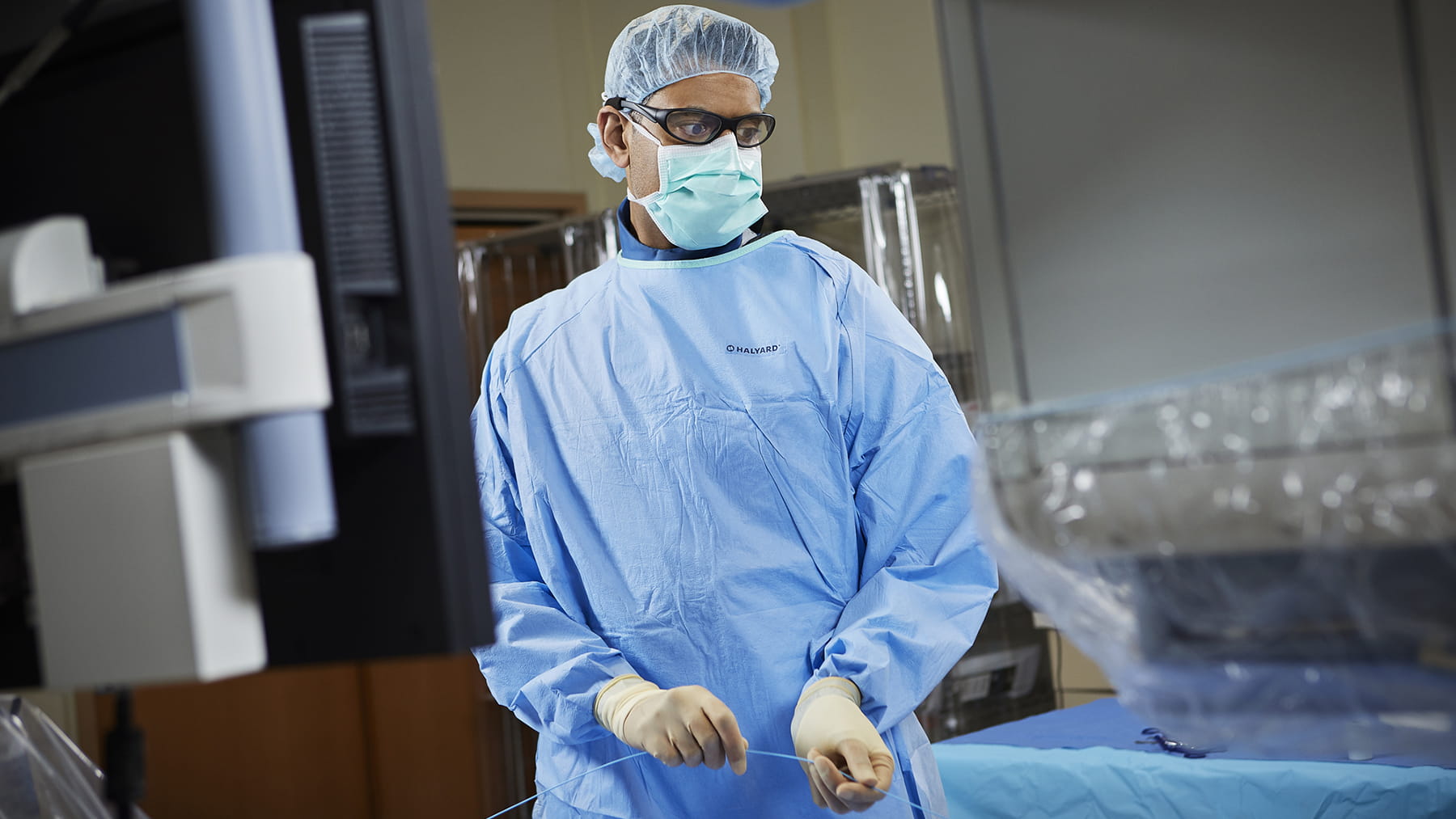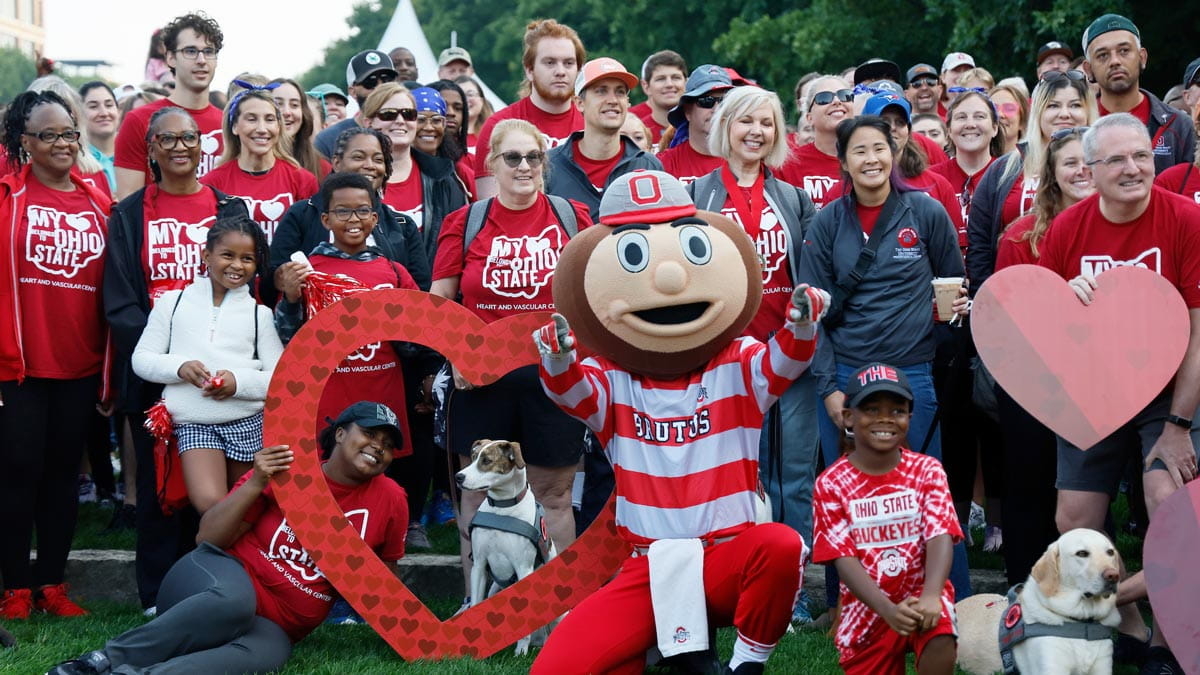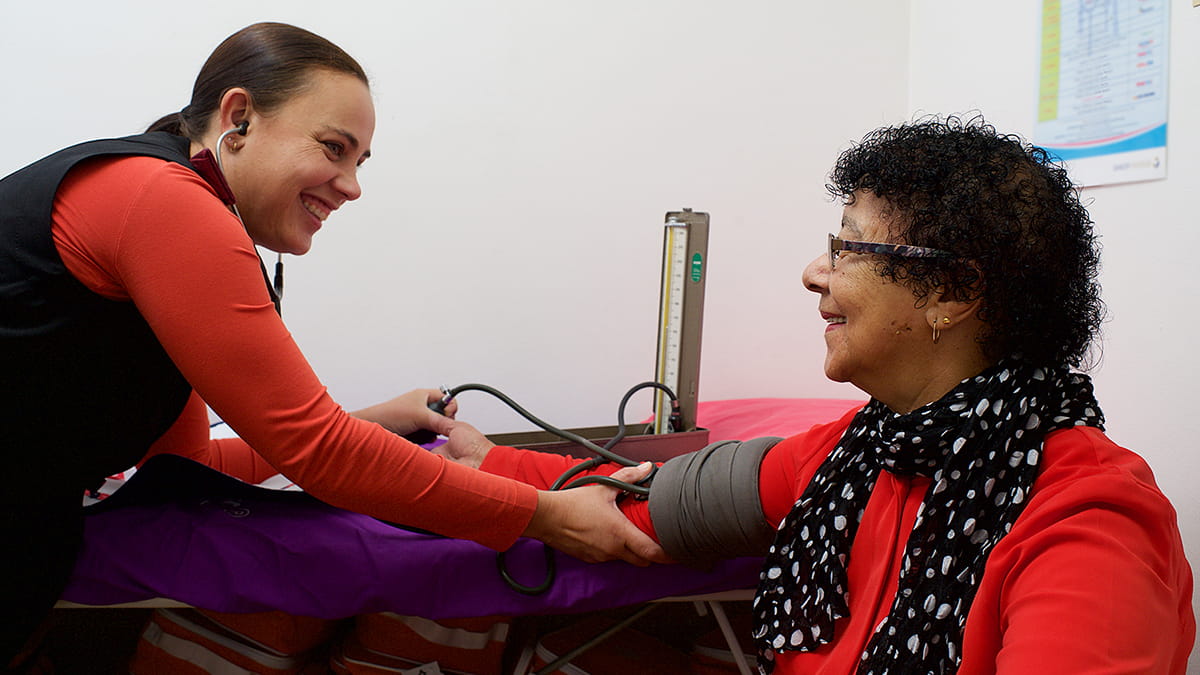Ohio State first to use new heart failure treatment that could help millions

Robert Dye would walk from his bedroom to the living room and be left out of breath. He would have to get up several times a night to sit on the edge of the bed to catch his breath because he couldn’t lay flat on his back.
Dye, 65, of Columbus decided to participate in the clinical trial after struggling with shortness of breath and poor circulation. He has a heart condition known as acute decompensated heart failure.
That means he experiences sudden, or gradual, onset of heart failure signs or symptoms. Those symptoms can include severe breathlessness, rapid weight gain and fluid build-up in the lungs and around the body. It requires chronic management by a physician and can lead to emergency room visits, hospitalization and readmission.
But a new treatment performed by cardiologists at The Ohio State University Wexner Medical Center has given Dye a new lease on life.
“My color is back, I don’t have shortness of breath and my legs and arms aren’t cold anymore,” he said.
The Ohio State Wexner Medical Center is the first in the United States to use a new pulmonary neuromodulation system to treat heart failure patients like Dye.
The treatment that was administered to Dye could potentially be used on millions of Americans who suffer from heart failure. About 6.2 million adults in the United States have heart failure, according to the Centers for Disease Control & Prevention.
The treatment works by using a minimally invasive catheter, which is placed via a neck vein that connects to the heart. It sits in the pulmonary artery to stimulate a nerve on the back of the heart. There’s a bedside stimulation console to monitor the treatment.
Early studies have shown that stimulating the nerve can strengthen the heart so it can pump blood more efficiently throughout the body without considerably increasing the heart rate.
“Currently, drugs are the main treatment for acute decompensated heart failure, but many have side effects that may limit benefit, especially for patients who are sicker or more complex,” saidSitaramesh Emani, MD, director of heart failure clinical research at the Ohio State Wexner Medical Center and associate professor of cardiovascular medicine in the College of Medicine.
Emani, who is local principal investigator of the international trial, completed the procedure on Oct. 22 at The Ohio State University Richard M. Ross Heart Hospital and was assisted by Rami Kahwash, MD, director of Ohio State’s heart and vascular research and professor of clinical medicine.
“Options to treat ADHF have not evolved as rapidly, despite a significant and ongoing need for proven treatments. What’s truly novel about this system is that it treats both the underlying problem and symptoms of ADHF,” he said.
Emani, who is on the scientific advisory board of the system’s manufacturer, Cardionomic, helped develop the protocol for the treatment and took part in an early feasibility study. The clinical trial is expected to continue for the next couple of years.
As for Dye, he said he feels “100% better.”
“It’s a 180-degree turnaround,” he said.




